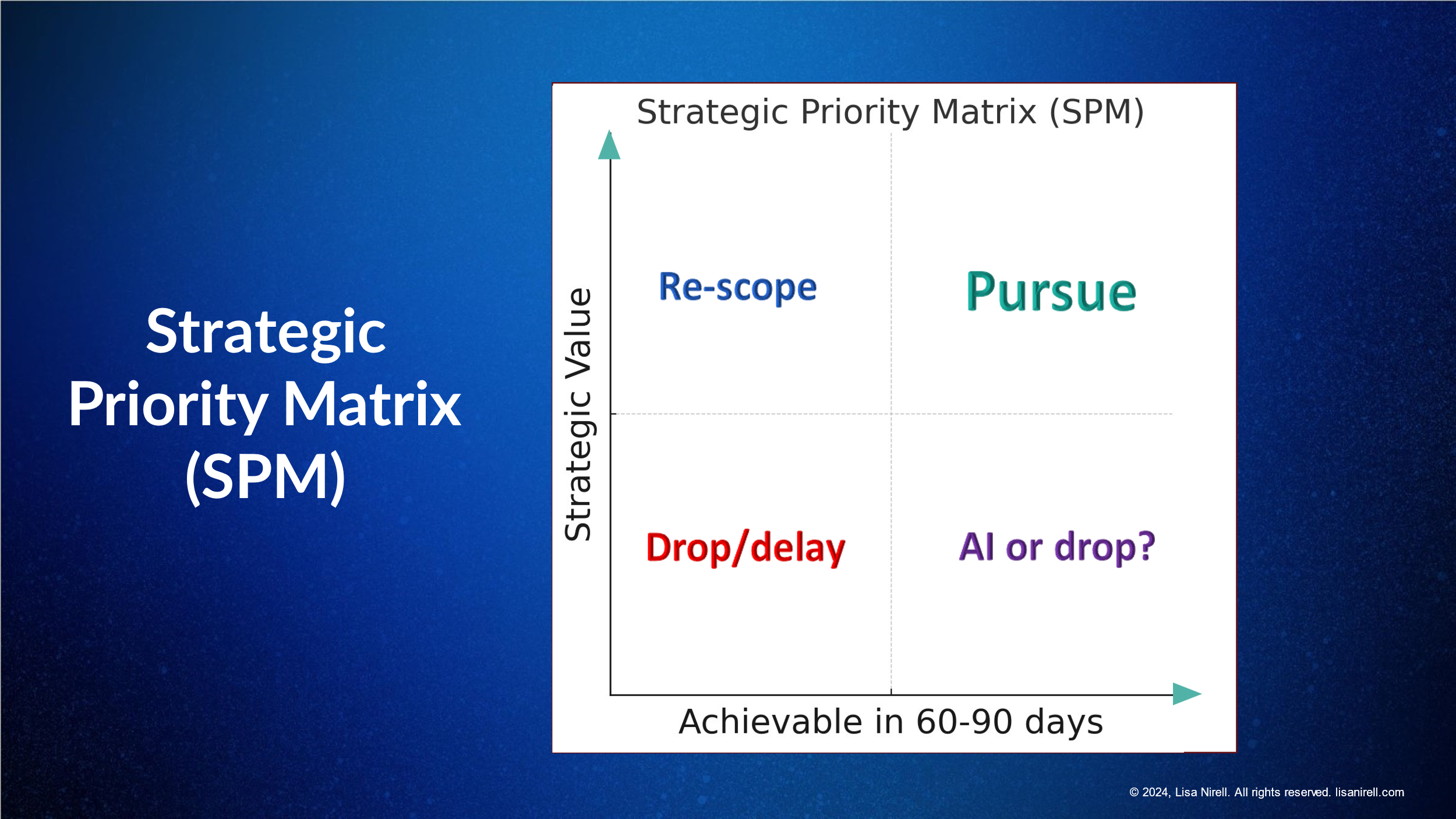Awards season reveals new films to add to my winter watch list.
Are you a movie fan like me? Then you probably heard this quote from Natalie Portman. She’s an American actor with an impressive Oscar, Golden Globe, and BAFTA statue collection.
Her January Wall Street Journal interview tells us her success secret:
“The most important thing for who you are is not what you say YES to, but what you say NO to.”
If these wise words work for A-listers, they can work for you.

📽 Why should you care?
Costly job burnout, overwhelm, and team disengagement continues to happen. Although Meta’s trendsetting “era of efficiency” announcement promised a brighter future and metaverse breakthroughs, it left humans (including safe platforms for teenagers) on the cutting room floor.
This appeared in high definition during some recent client interactions.
First, I led a session at a recent B2B sales kickoff. They announced an audacious growth target: to triple their growth rate from 2023 with the SAME number of resources and zero acquisitions.
Another B2B client just told the CMO and CRO to grow bookings by 40% without adding full time team members.
Tens of millions in revenues and higher customer churn are at risk here. It’s high stakes.
I quickly realized that a priority setting process offered the golden statue both leaders need to meet the challenge.
The process sounds like an old black and white film, right? It’s not AI-driven. It doesn’t require millions to deploy.
Yet it doesn’t come easily to most market leaders in Western culture.
That’s why I started small with these clients. By taking just a few first steps, I helped them improve their mindset and capacity. Today, they are focusing on the highest potential activities and reducing constant performance pressure. Here’s how you can, too:
1. Summarize your list of projects and priorities. Every one of them, including those “emergency trade show requests from Sales” or “cool AI projects that someone recommended on a podcast.”
2. Write down your team or personal SMART goals. Yes. All of them. Include the shiny pennies the CEO added last week. 😊
3. Verify whether Sales, Marketing, CX and Customer Success (or Support) share aligned goals. If not, return to step 2. Schedule time with your CEO or CMO to help you recalibrate.
4. Lead a healthy debate around “what makes an activity highly strategic to our team/department/organization?”
During this debate, avoid long and painful meetings that aim for 100% agreement. Instead, focus on getting commitment on the final 5-8 criteria. In other words, the team must agree to accept.
If this becomes too difficult, invite a seasoned facilitator to help you.
Here are some examples from organizations I have advised:
“Highly strategic” =
🎥 It amplifies our company as a “best place to work.” (and raises brand repute)
🎥 It delights our customers throughout their experiences with our firm.
🎥 It amplifies the right voices in our marketplace and across key ecosystems.
🎥 It helps us quickly grow customer success stories in the new market we are pursuing.
🎥 It unifies how we launch demand generation campaigns across marketing, sales, and product teams.
🎥 It involves cross functional team for initial pilot (no silos).
5. Create a 2 x 2 matrix. I named it the Strategic Priority Matrix (SPM). The X axis = “achievable in less than 90 days.” The Y axis = “strategic value.”

6. Map current projects and programs to the SPM. Be honest.
7. Place the SPM beside your workstation. For one week, ONLY pursue the 2-3 items in upper right quadrant.
8. When the loudest person in the room asks for an exception, take a breath. Practice your response. Explain calmly where this request fits on the matrix. Ask them whether they want to delay, drop or delegate. If they still want you to move this into the upper right quadrant, let them know the consequences.
If that doesn’t work, ask your boss (or CEO) to add their two cents.
9. Rehearse weekly. For top billing, laminate the SPM and keep it beside your workstation. Use a dry erase marker when you need to shift priorities within the four quadrants. Erase them when you have completed an assignment.
I know this exercise isn’t as cool as a chatbot. It doesn’t require a scrum master. Yet its simplicity removes barriers to trying it.
Would you still like guidance? Watch the process in action on The Mindful Marketer livestream — April 12 from 11-11:35 pm ET. I’ll be on LinkedIn Live and YouTube and will demonstrate how companies use this model to increase focus, alignment and confidence.
Message me to join the “silver screen strategy session” April 12.
📽Cut and scene! 📽
P.S. Need better focus and alignment NOW? Contact me about our private member cohort session on Feb. 28 (Zoom).
